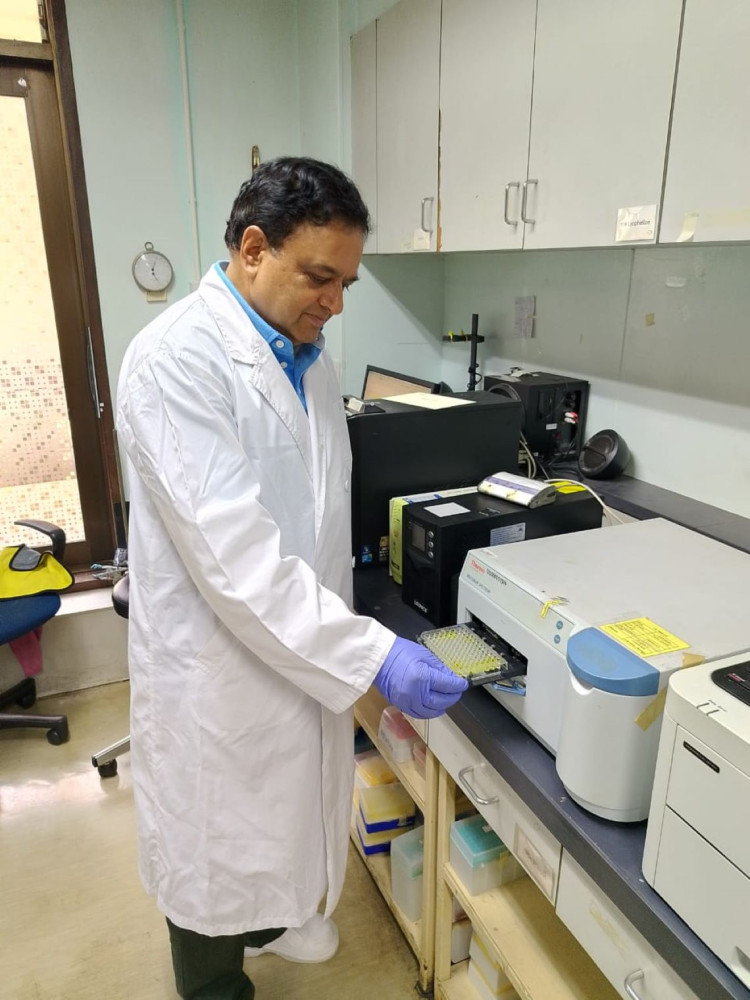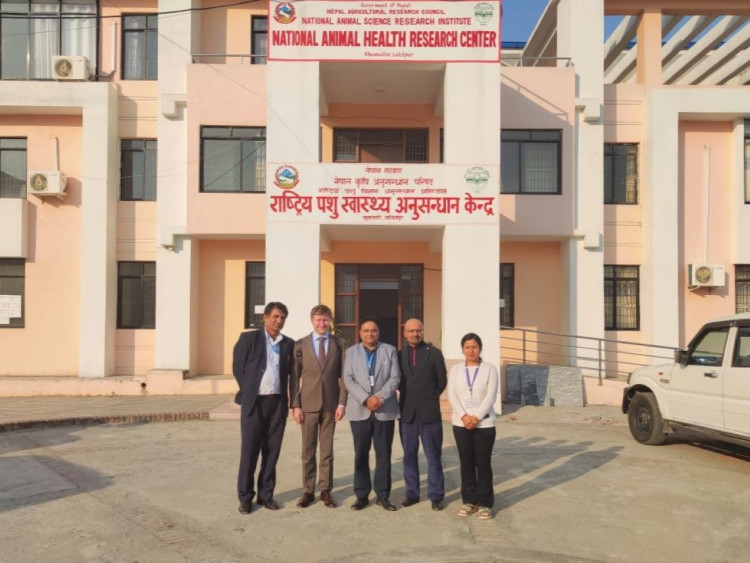Nepal has improved its healthcare, food safety, animal health and national radiation safety infrastructure with the help of training and equipment from the IAEA's technical cooperation programme. Increased human and institutional capacities are helping the country to move towards graduation from the UN's 'Least Developed Country' category in November 2026.
Nepal is one of the 45 countries on the United Nations' list of Least Developed Countries (LDCs). LDCs are defined by the UN as having low levels of income and facing severe structural impediments to sustainable development. They host about 40 per cent of the world's poor and are highly vulnerable to natural and environmental shocks. They may also be disproportionately affected by climate change and have low levels of human resources. Human resource development therefore lies at the heart of the IAEA technical cooperation programme's support to Nepal.
In 2023, the IAEA facilitated the update of Nepal's information in the IAEA's Radiation Safety Information Management (RASIMS) system to enhance its national infrastructure for radiation safety. Information in RASIMS is reviewed by the IAEA during the development, approval and implementation of its technical cooperation projects. This ensures that technical assistance is provided where it is most needed, and that the national radiation safety infrastructure is in line with IAEA Safety Standards. With this safety infrastructure now in place, the IAEA has procured radiation medicine equipment for Nepal, including a SPECT/CT system for the Bir Hospital in Kathmandu, which will help enhance diagnostic accuracy.
In the area of human health, the IAEA supports the Government of Nepal in its fight against malnutrition, a government priority since 2009. Malnutrition accounts for over 50 per cent of child mortality in Nepal, according to World Health Organization estimates. The IAEA has introduced nuclear techniques to assess the body composition of children under five, enabling Nepal to conduct studies on body composition to inform policies on the therapeutic feeding of malnourished children.
The IAEA's technical cooperation programme offers countries support for capacity building, delivered through training, education and technology transfer, in key sectors such as food and agriculture, and health and nutrition. These activities aim to build a critical mass of scientists and to contribute directly to improving socioeconomic conditions in LDCs.

An expert uses nuclear techniques to address childhood malnutrition. (Photo: B. Pudasaini)
"Since joining the IAEA in 2008, Nepal has made remarkable strides in healthcare, food safety, animal health, and national radiation safety infrastructure with the continuous support of various technical cooperation projects," says Bishwo Pudasaini, National Liaison Officer for Nepal. "These initiatives have significantly enhanced our medical physics, nuclear medicine, and radiation oncology sectors, alongside improving laboratory capabilities for animal production and health, particularly for bovine brucellosis, and nutrition assessments. The support from the IAEA has been instrumental in advancing our national capacity to offer improved diagnostic and treatment services and patient outcomes across these critical areas."
Together with the Food and Agriculture Organization (FAO) of the UN, through the Joint FAO/IAEA Centre of Nuclear Techniques in Food and Agriculture, the IAEA also supports Nepal in utilizing nuclear science and technology for food and agriculture. As part of these efforts, the IAEA enhanced Nepal's capacity to analyse pesticide residues in agricultural products through staff training, laboratory upgrades, and the establishment of protocols and a database for monitoring pesticide levels to ensure food safety.

Expert team at the Nepal's National Animal Health Research Centre. (Photo: D. Subbotnitskiy / IAEA)
"Thanks to the IAEA's support, we are enhancing our agricultural and animal health capabilities. We have adopted climate-smart technologies to increase grain yields and improved our Animal Nutrition Centre and Animal Breeding and Genetics Centre," said Doj Raj Khanal, IAEA counterpart for Nepal. "Our diagnostic abilities for zoonotic diseases and efforts to tackle antimicrobial resistance and transboundary diseases have also been significantly strengthened," he added.
Under the IAEA's ZODIAC (ZOOnotic Disease Integrated Action) initiative, the IAEA has also supported Nepal in the early detection of animal and zoonotic diseases, such as Brucellosis, by enhancing surveillance, control measures, and farmer awareness in Kathmandu and at regional laboratories in Surkhet, Pokhara, Dhangadhi, Biratnagar and Janakpur.
The IAEA's tailored activities, such as national training courses, fellowships, and scientific visits have provided national experts with the skills and practical experience necessary to help address Nepal's challenges. These activities have enhanced local expertise in the effective use of nuclear science and technology and supported progress toward national goals.






